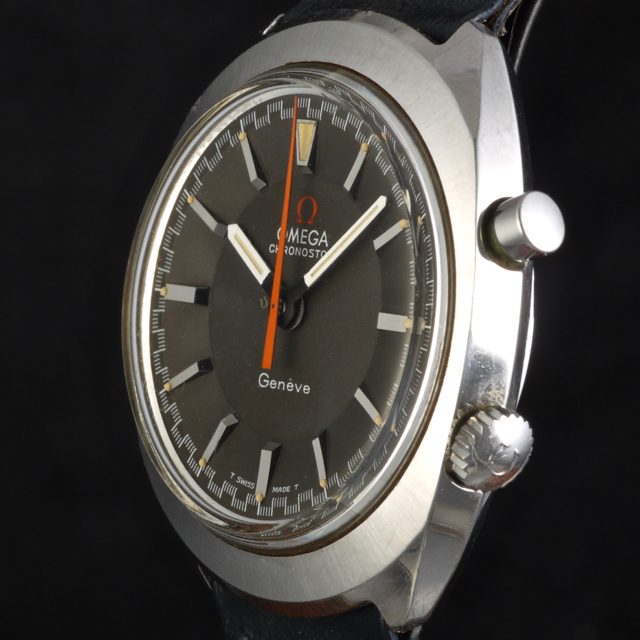
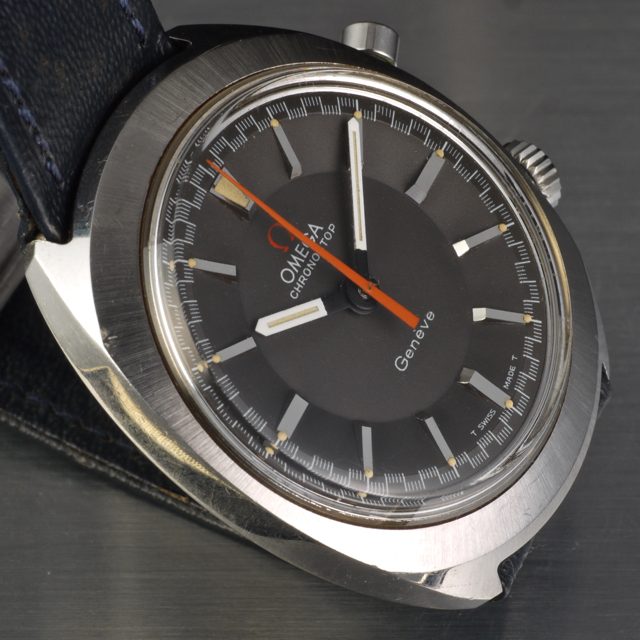
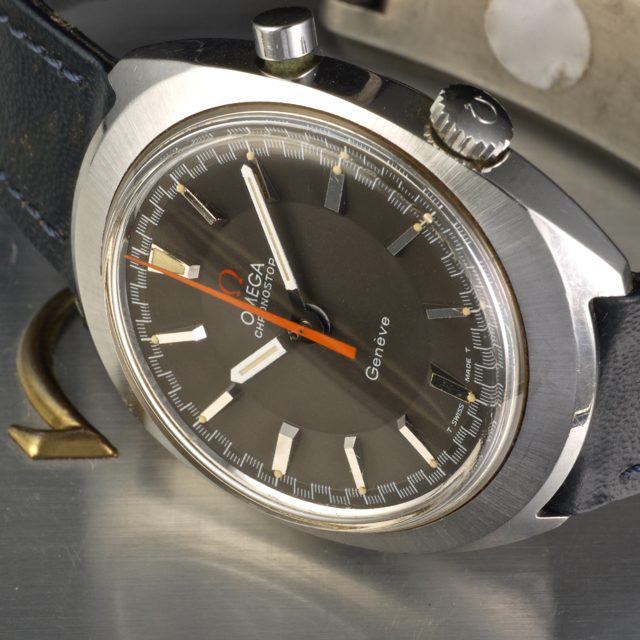
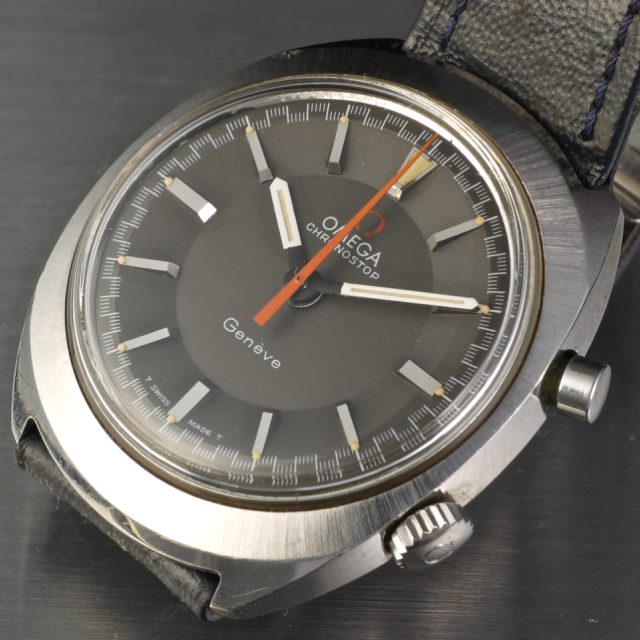
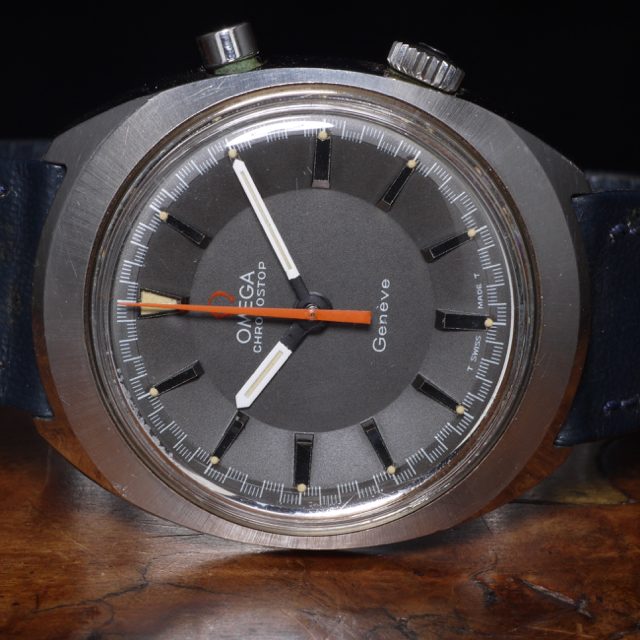
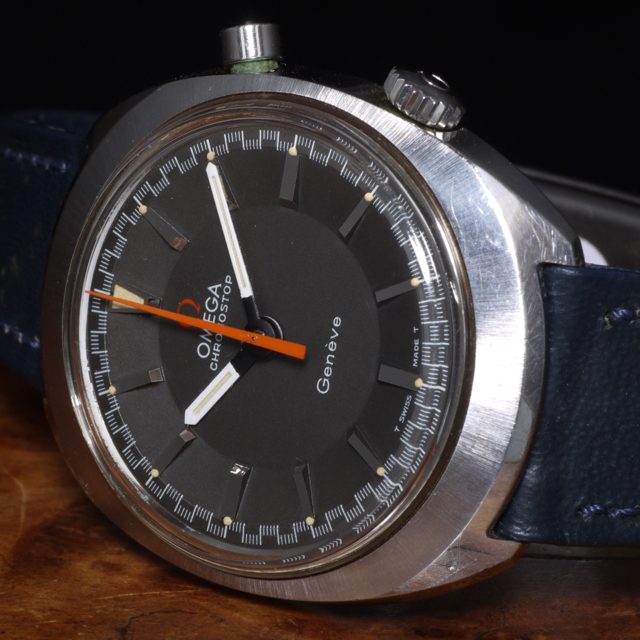
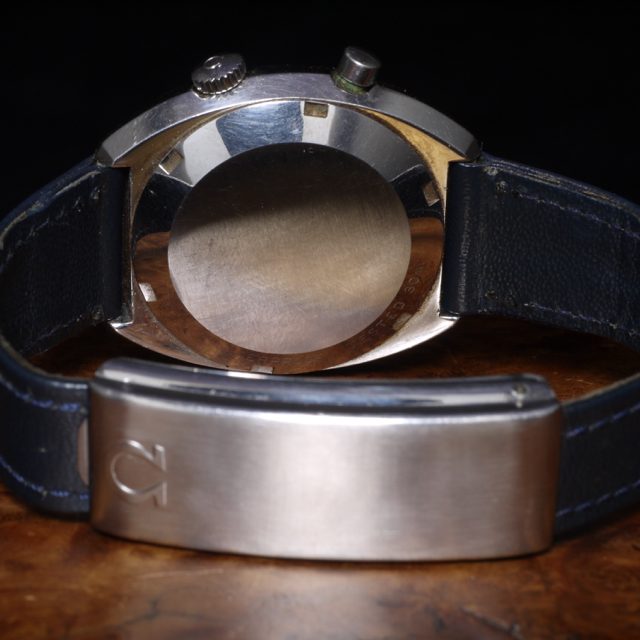
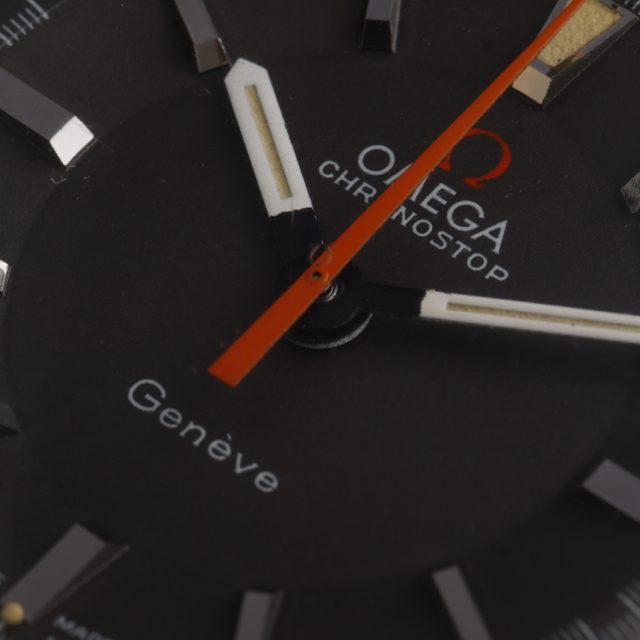
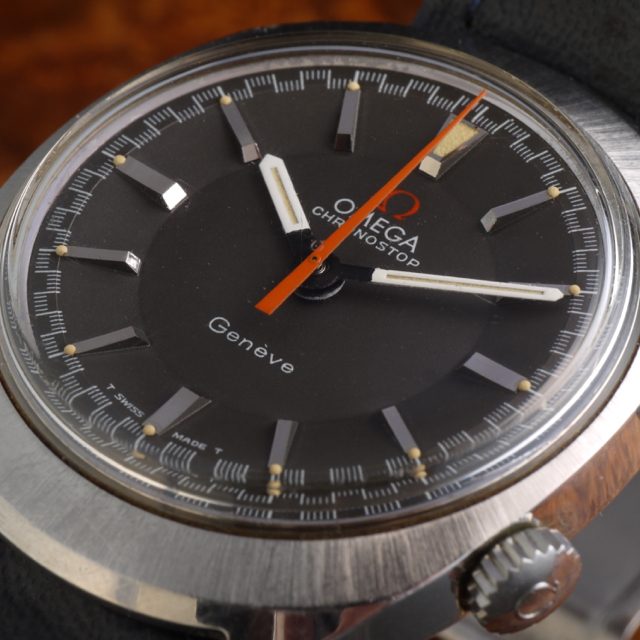
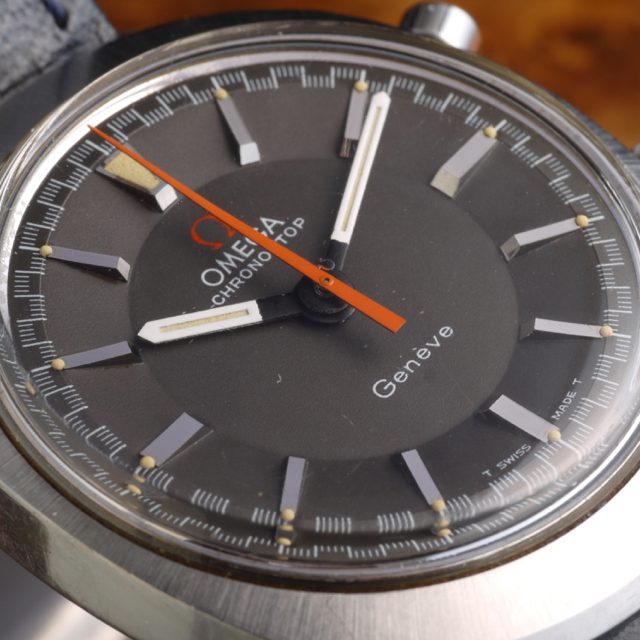
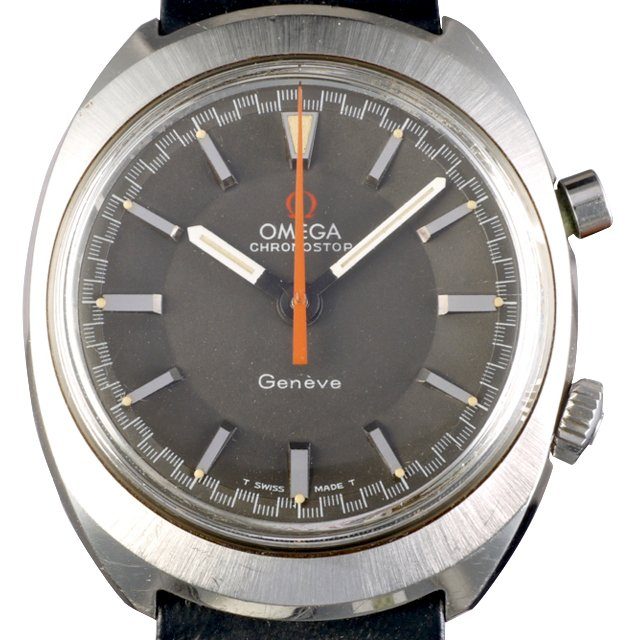
Omega Chronostop
Jerome Friedman, Henry Kendall, Richard Taylor (US) discover protons and neutrons to be composed of even smaller particles called quarks1967 Omega Chronostop ref. ST 145.009 manual wind cal. 865.
The young style Omega Chronostop was launched as a line of the Seamaster collection but transferred in 67 into the Geneve collection.
Manufactured in the late 1960s-1970s, with a few different case orientations and movements, the Chronostop was designed to be worn under the wrist, making them popular with drivers.
The Chronostop is a 60-second stopwatch with a press and release stop-second feature engaged by the single pusher at 2 o’clock. To start the chronograph, the single pusher is depressed. To stop it, the pusher is depressed and held, and then released to reset.
Omega was founded in 1848 by Louis Brandt at the age of 23. The brand’s reputation grew fast and in 1895 the watches achieved a precision of 30 seconds a day.
By the turn of the 19th century Omega was one of Switzerland’s largest watch companies with 240,000 watches produced annually and employing 800 people.
Omega made its debut in sports during the Gordon Bennett international ballooning Cup in 1917; since then Omega has gone on to be the official timekeeper at 21 Olympic Games.
In 1936 Omega set the remarkable World precision record of 97.8 points at the Kew-Teddington observatory in England.
In 1957, with motorsport in mind, Omega launched the Speedmaster, which in 1965 was chosen by NASA as its official chronometer in Space. Four years later the Moonwatch was the first watch to be worn on the Moon, when on 21st July 1969 Neil Armstrong made his giant leap for mankind. Currently Omega belongs to the Swatch Group.
